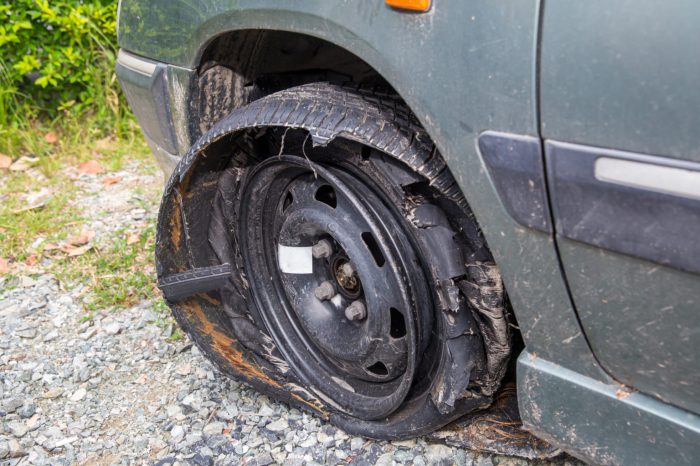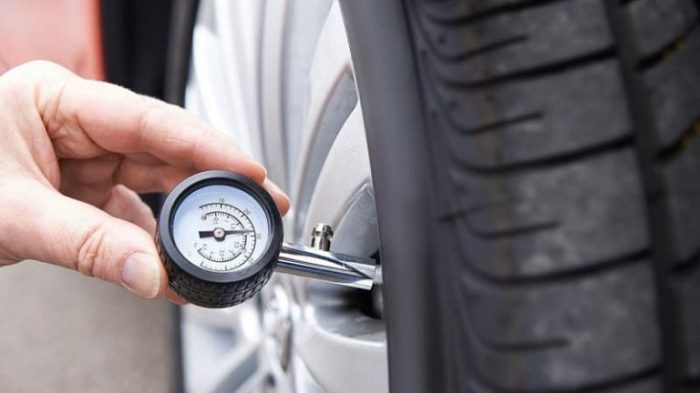To help recover from a tire blowout – Experiencing a tire blowout can be a frightening and potentially dangerous situation. This guide provides a comprehensive overview of how to safely recover from a tire blowout, including essential safety measures, identifying the cause, temporary tire repair, permanent tire replacement, and preventative maintenance strategies.
Understanding the steps to take and the factors that contribute to tire blowouts empowers drivers to handle these incidents with confidence and minimize the risks involved.
Tire Blowout Recovery: A Comprehensive Guide: To Help Recover From A Tire Blowout

Safety First, To help recover from a tire blowout
Experiencing a tire blowout can be a frightening and dangerous situation. It is crucial to remain calm and take the necessary steps to ensure your safety. Pull over to a safe location as soon as possible, avoiding sudden or abrupt maneuvers.
Assess the situation and check for any injuries. If necessary, call for emergency assistance.
While pulling over, gradually reduce your speed by gently applying the brakes. Avoid slamming on the brakes, as this can cause the vehicle to lose control. Steer the vehicle towards the shoulder or a safe area off the road. Once you have come to a complete stop, engage the parking brake to prevent the vehicle from rolling.
Identifying the Cause
Understanding the cause of a tire blowout is essential to prevent future incidents. Common causes include:
- Underinflation: Insufficient tire pressure can weaken the tire structure, making it more susceptible to blowouts.
- Overloading: Exceeding the vehicle’s weight capacity can put excessive strain on the tires, leading to blowouts.
- Road hazards: Sharp objects or debris on the road can puncture or damage tires, causing a blowout.
- Tire defects: Manufacturing defects or material flaws can weaken tires and increase the risk of blowouts.
Inspect the flat tire for any visible damage or punctures. If possible, examine the road surface where the blowout occurred to identify potential hazards.
Temporary Tire Repair
If you have a spare tire or a tire repair kit, you can attempt a temporary repair to get you to a safe location. However, it is important to note that these repairs are not permanent and should only be used as a temporary solution.
- Jack up the vehicle using the designated jack points.
- Remove the lug nuts and flat tire.
- Install the spare tire or plug the puncture using the tire repair kit.
- Tighten the lug nuts securely.
- Lower the vehicle and remove the jack.
Remember to drive cautiously with a temporary tire repair and schedule an appointment for permanent tire replacement as soon as possible.
Permanent Tire Replacement
Permanent tire replacement involves choosing the right tires for your vehicle and having them professionally installed. Consider the following factors when selecting tires:
- Vehicle specifications: Refer to your vehicle’s owner’s manual for the recommended tire size, type, and pressure.
- Driving conditions: Choose tires that are suitable for your typical driving conditions, such as all-season tires for moderate climates or winter tires for snowy areas.
- Performance requirements: If you require specific performance characteristics, such as enhanced handling or fuel efficiency, consider high-performance or low-rolling resistance tires.
Once you have selected the appropriate tires, schedule an appointment with a reputable tire shop. They will remove the damaged tire, install the new tires, and ensure proper alignment and balance.
Prevention and Maintenance
Regular tire maintenance is crucial to prevent future blowouts. Check your tire pressure monthly using a tire pressure gauge and adjust it to the recommended levels. Inspect your tires for any signs of wear, damage, or punctures. Rotate your tires every 5,000 to 8,000 miles to ensure even wear and extend their lifespan.
Avoid overloading your vehicle and be aware of road hazards. If you encounter any sharp objects or debris, slow down and drive cautiously to minimize the risk of a puncture.
Quick FAQs
What are the most common causes of tire blowouts?
Underinflation, overloading, and road hazards such as potholes or sharp objects are the most frequent causes of tire blowouts.
Can I drive on a flat tire?
No, driving on a flat tire can damage the wheel rim and the tire beyond repair. It is essential to pull over to a safe location and replace or repair the flat tire as soon as possible.
How often should I check my tire pressure?
Tire pressure should be checked regularly, at least once a month or before long trips. Proper tire pressure ensures optimal performance, handling, and fuel efficiency.


